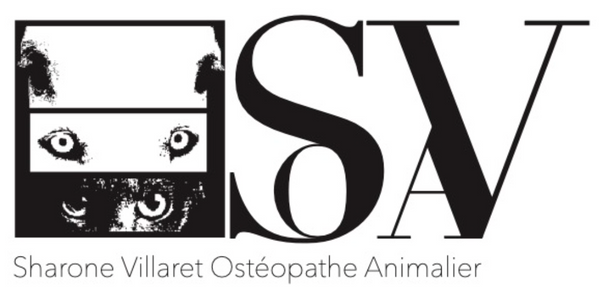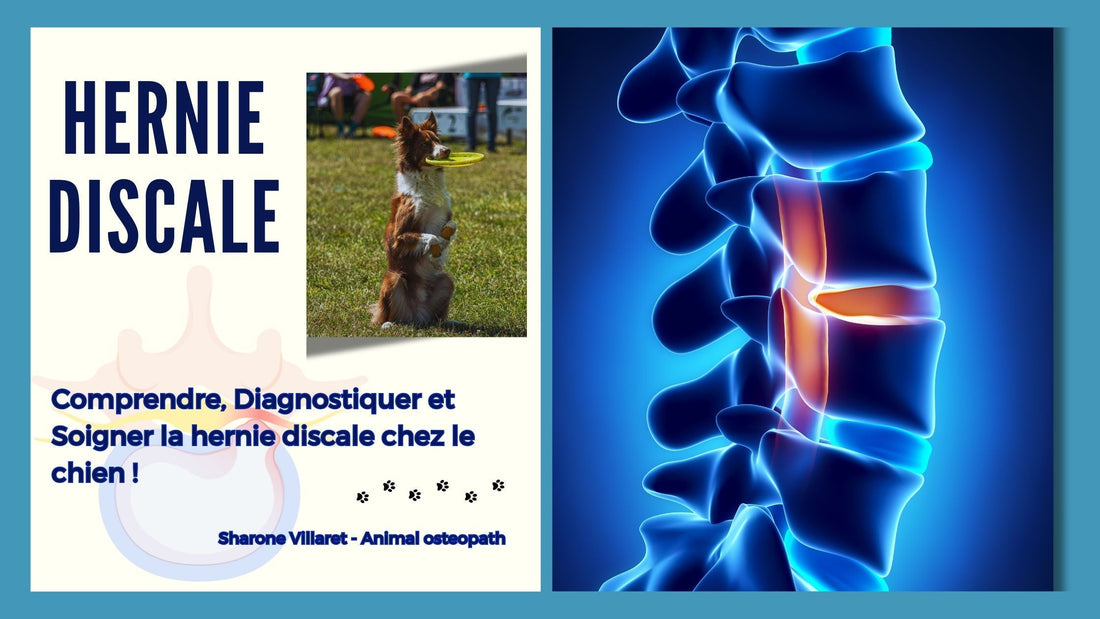What is a Herniated Disc?
A herniated disc in dogs is a spinal condition that affects the intervertebral discs. These discs act as shock absorbers between the vertebrae and allow flexibility in the back. A herniated disc occurs when the disc shifts, ruptures, or compresses, putting pressure on the spinal cord and nerves.

Causes and Risk Factors
A herniated disc can be caused by:
- Age-related disc degeneration , particularly in predisposed breeds such as the Dachshund, French Bulldog, Cocker Spaniel and Beagle.
- Trauma (shock, fall, accident).
- Excessive exertion (repeated jumping, sudden movements).
- Excess weight that puts additional pressure on the spine.
- A genetic predisposition to certain disc cartilage abnormalities.
- Clinical Signs and Neurological Symptoms
Signs vary depending on the severity of the hernia and the area affected:
- Back or neck pain (the dog may whine, stiffen, or avoid movement).
- Difficulty moving (lameness, stiffness, abnormal gait).
- Weakness of limbs (paresis, ataxia).
- Loss of coordination .
- Inability to walk in severe cases.
- Loss of sensitivity and decreased reflexes.
- Urinary and fecal incontinence if the compression is significant.
- Total or partial paralysis in the event of severe damage.
Diagnosis of Herniated Disc
The diagnosis is based on:
- A clinical and neurological examination by the veterinarian to assess the location and severity of the injury.
- Imaging tests :
- X-ray (not very precise but can rule out other pathologies).
- MRI or CT scan to visualize the condition of the discs and spinal cord compression.
- Myelography in certain cases to better locate the hernia.
Treatments: Surgery or Rehabilitation?
Treatment depends on the severity of the hernia and the dog's condition.
1. Surgical Treatment
If spinal cord compression is severe and results in paralysis, surgery is often recommended. The procedure involves removing the portion of the disc compressing the spinal cord.
Post-operative rehabilitation
After surgery, rehabilitation is essential to optimize recovery:
- Animal osteopathy : promotes circulation, reduces inflammation and helps restore harmonious mobility.
- Physiotherapy : passive exercises, massages and electrical stimulation.
- Hydrotherapy : helps strengthen muscles without impact on joints.
- Proprioception exercises : strengthening balance and coordination.
2. Medical Treatment and Rehabilitation without Surgery
If the dog has a mild hernia or if surgery is not indicated, a conservative protocol is implemented:
- Strict rest (4 to 6 weeks) to avoid any worsening.
- Anti-inflammatory and analgesic to relieve pain and reduce inflammation.
- Osteopathy and physiotherapy to improve mobility and limit muscular compensations.
- Hydrotherapy (swimming pool or aquatic treadmill) to strengthen the back and rehabilitate walking.
- Active rehabilitation with specific exercises to strengthen the back muscles and stabilize the spine.
Prevention and Advice to Owners
- Avoid excessive jumping and sudden movements.
- Control the dog's weight to limit pressure on the spine.
- Use a harness instead of a collar to avoid neck strain.
- Arrange the environment (ramp to get onto the sofa, non-slip mats).
- Have regular osteopathy and physiotherapy sessions to maintain good joint mobility.
Conclusion
A herniated disc in dogs is a serious condition that requires prompt and appropriate treatment. Early diagnosis and careful monitoring can significantly improve the prognosis. Whether treated surgically or conservatively, rehabilitation plays a key role in the animal's recovery and well-being. Multidisciplinary care (veterinarian, osteopath, physiotherapist) optimizes the chances of recovery and allows the dog to regain an optimal quality of life.
Click here to book an appointment with a canine osteopath in Portugal!

